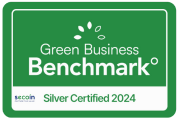FAQs
Here are some common questions and answers. If you still have any other questions related to our products or services, please send your questions to contact(at)secoin.com. Thank you.
We do not have limited number of colors in one design. We have some patterns with up to 10 colors or checker-board tiles with up to 25 colors. The more colors the higher cost. However, specific designs and colors will be quoted by case.
Yes, we can make custom cement tile designs. This requires making a custom "new divider mold". We have the best artisans for making custom divider mold in-house and can create divider molds for almost any designs from our customers. Getting a custom cement tile design will take a bit longer and there is an additional cost.
Yes, besides Secoin’s 75 standard colors, we can match almost any colors. Getting a custom color will take a bit of time and an additional cost.
As a characteristic of cement tiles, our products do not have exactly the same thickness. There is certain allowed tolerance, which is about +/- 1mm for thickness of tiles.
Due to the tolereance, it is recommended to use mortar instead of glue when laying tiles so as to easily adjust tiles to a flat surface.
The white mark you see is efflorescence. Secoin Encaustic Cement Tile have very few problems with efflorescence as we are using a special environmentally friendly additive which has the function of reducing efflorescence. However efflorescence is an inherit problem for all cementitious products and does no harm to the products. It is a natural occurring phenomenon and cannot be totally controlled. If you see white marks on tile surface - that is efflorescence which will gradually go away.
Considerably reduced efflorescence is one of the outstanding features in Secoin encaustic cement tiles as compared to other similar products.
Our standard thikcness for cement tiles is 1.6cm for most of sizes, tiles may be up to 2.0 – 2.5 cm thickness for size 30x30cm. However, we have thinner tiles for walling with 1.2cm thickness.
Secoin encaustic cement tiles are considered “green” products. They are manufactured from natural materials (cement, sand, stone powder, pigment) under hydraulic pressing process. Unlike ceramic or clay-burnt tiles, no heat is involved, so there is no consumption of fuel; no clay is used, so there is no consumption of agricultural land.
Yes. Please be aware that cement tile is a handmade product. Cement tiles will not be identical from piece to piece. Slight variations such as size, shade, slight imperfections, irregular edges are inherent to this product and can vary from piece to piece. This adds to the natural appeal and does not compromise the performance. Secoin does not give warranty against shade variations.
No, the patterns are neither painted nor printed. Liquid colored materials (consisting of white cement, pigment, fillers, additives which are friendly to the environment) are hand-poured into divider molds to create these patterns. They are actually a layer of approx. 2-3mm. Therefore, the patterns will last very long and never go away. There are many ancient buildings in which cement tile floors have been existing for more than 100 years but still very beautiful. We have a short video on “How Cement Tiles are Made”, with an explanation and additional photographs.
Encaustic terrazzo tiles are made as the combination of traditional encaustic cement tile and terrazzo tile. In encaustic terrazzo, small natural stone chips are used on the surface to create a special look. Other type of decorative chips, such as mother-of-pearl, glass chips,… can be used to enhance the beauty for tile products.
In encaustic terrazzo tiles, as there are decorative chips in the patterns, the lines of patterns are not as sharp and smooth as in encaustic cement tiles.
Another difference between encaustic terrazzo tiles and encaustic cement tiles is that encaustic terrazzo tiles have to go through grinding-polishing process which makes the decorative chips to be exposed on the surface.

















